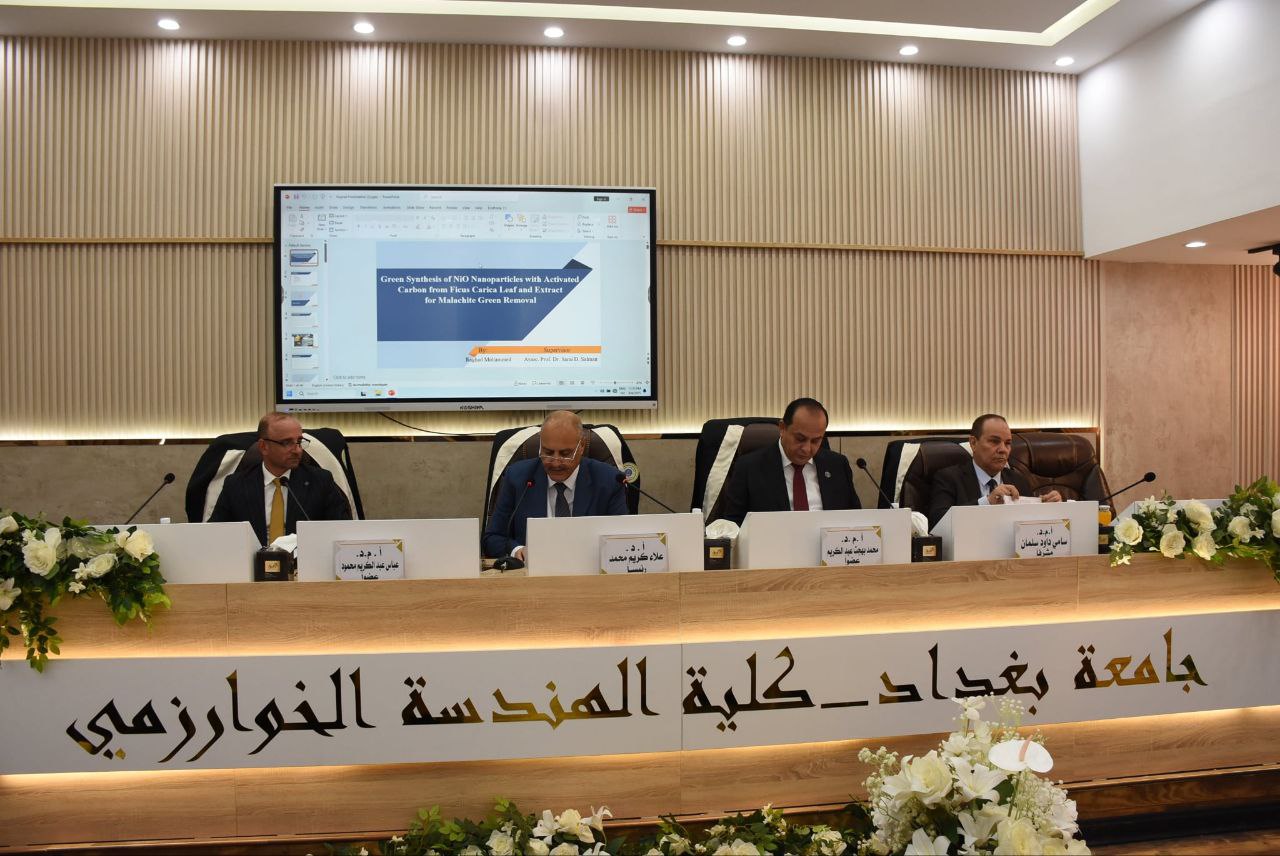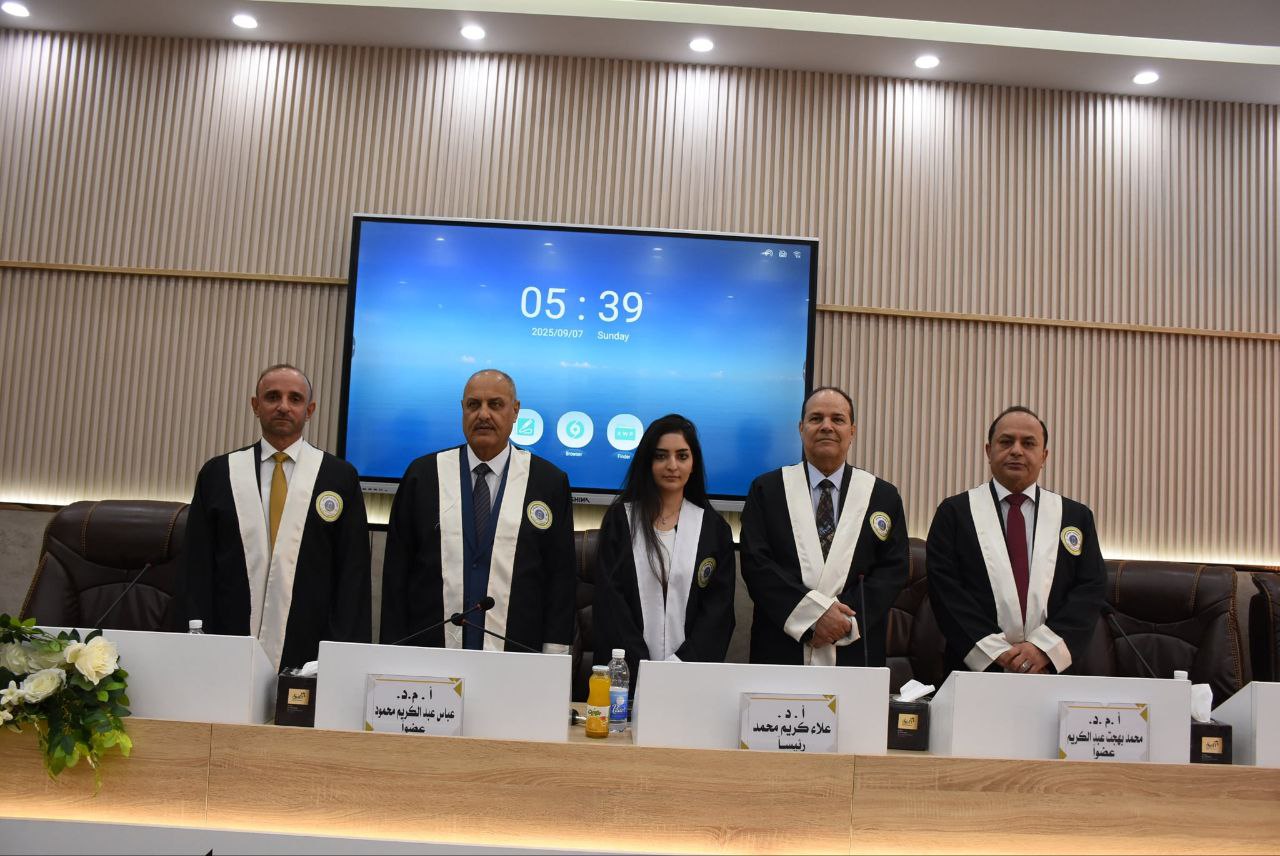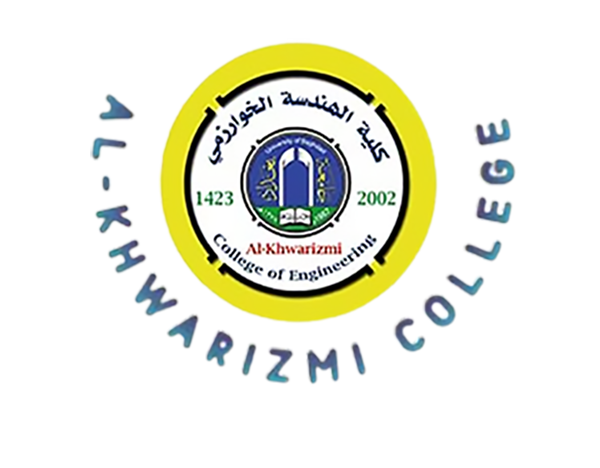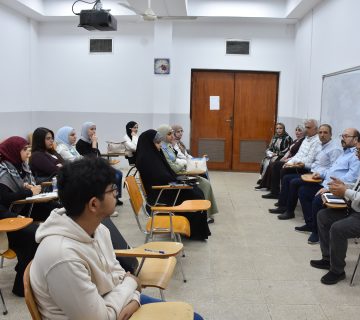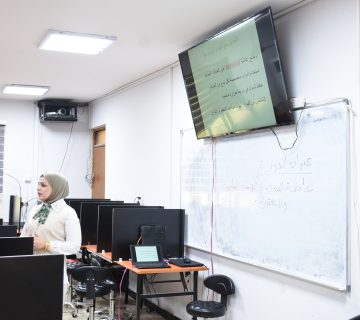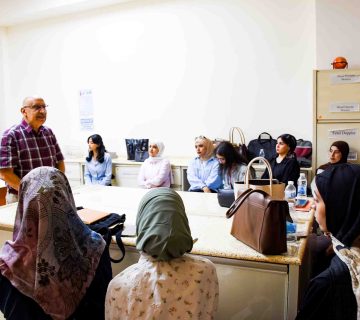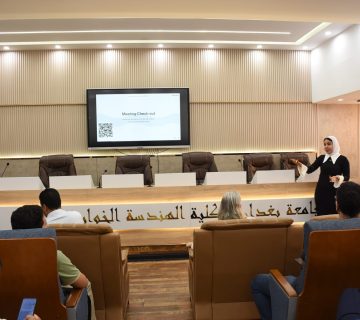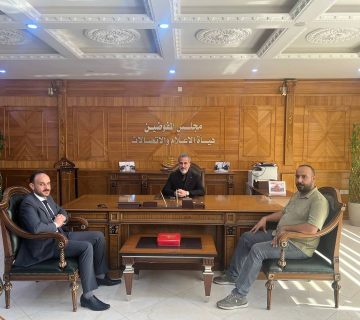AL-Khwarizmi College of Engineering held a master thesis defense on Sunday morning Sep 7th, 2025 under the title (Green Synthesis of NiO Nanoparticles with Activated Carbon Derived from Ficus Carica Leaf and Extract for Malachite Green Dye Removal) for the student Raghad Muhammed Hadi from Biochemical Engineering Department and a degree of pass with merit has been granted to the candidate.
The study demonstrated that cationic and anionic dyes, such as crystal violet, malachite green, safranin, and methylene blue, are recognized as significant water pollutants due to their widespread use and environmental persistence. This study investigates the feasibility of using nickel oxide (NiO), activated carbon (AC), and NiO/AC composites derived from agricultural waste as cost-effective and efficient adsorbents for the removal of malachite green dye from aqueous solutions.
Ficus carica leaf were employed as a raw material for the synthesis of activated carbon, nickel oxide nanoparticles, and the NiO/AC composite Characterization of the synthesized materials was performed using scanning electron microscopy (SEM), energy-dispersive X-ray spectroscopy (EDS), Brunauer–Emmett–Teller (BET) surface area analysis, and Fourier-transform infrared spectroscopy (FTIR).Response Surface Methodology (RSM), implemented via Design-Expert software (Stat-Ease 13), was employed to optimize the experimental conditions and reduce the number of required runs compared to a full factorial design, while also elucidating the relationship between key parameters affecting malachite green adsorption. The influence of initial dye concentration, solution pH, contact time, agitation speed, and adsorbent dosage on removal efficiency was investigated using a batch adsorption approach. One-way analysis of variance (ANOVA) was applied to assess the statistical significance of each parameter. Adsorption isotherms, including Freundlich and Langmuir models, and kinetic models of first- and second-order were employed to analyze the adsorption process. Furthermore, thermodynamic parameters, including the changes in enthalpy (ΔH°), Gibbs free energy (ΔG°), and entropy (ΔS°), were evaluated to understand the adsorption mechanism.
The study ended with recommendations to expand the scope of future studies by using different forms of composite activated carbon for treating real dye-contaminated wastewater in addition to the possibility of verifying the adsorption efficiency after regenerated adsorbents with different methods. Additionally, conducting experiments using packed-bed columns filled with the adsorbent materials under continuous operational conditions aligned with industrial applications.
